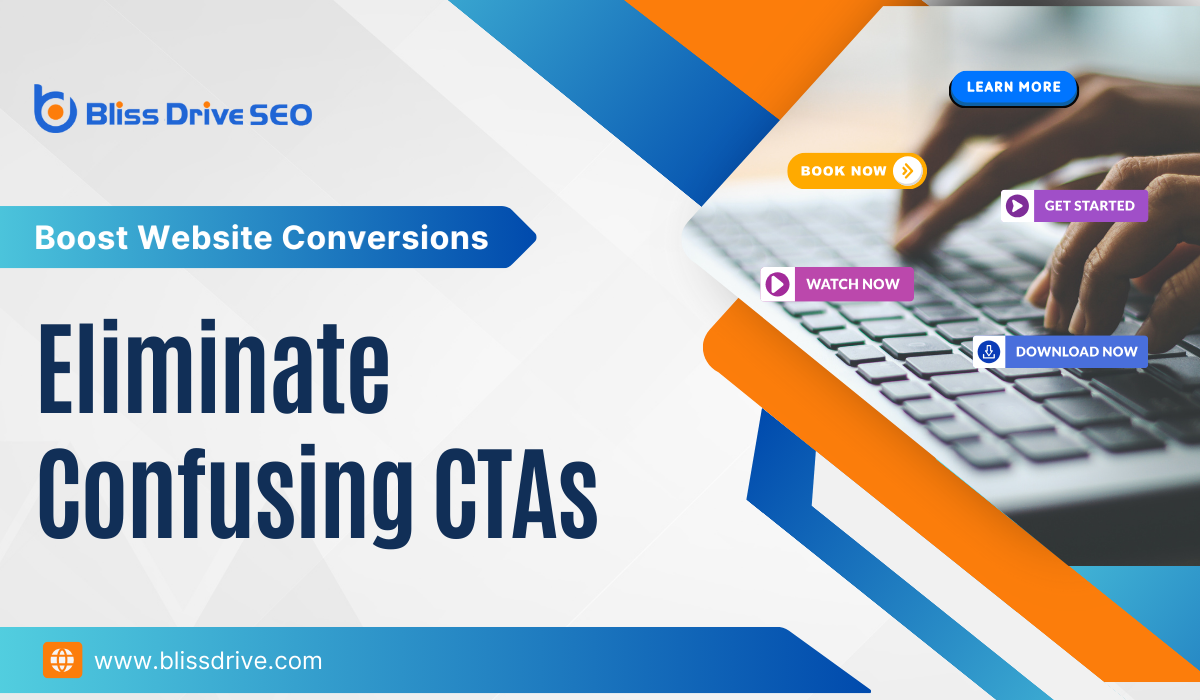Digital Marketing Services
Learn More About Us

Are your website's Call-to-Actions (CTAs) clear enough to guide users?
Your CTAs are pivotal in transforming site visits into valuable actions, whether that’s making purchases, signing up for newsletters, or downloading resources.
But, if your CTAs confuse rather than clarify, you might lose potential customers every minute. To eliminate confusing CTAs, you must:
In this guide, we’ll explore how to craft CTAs that not only catch the eye but also compel action. We will also discuss the common pitfalls and discover how to test and refine your CTAs for the maximum impact.
A Call-to-Action (CTA) is a prompt on a website that tells the user to take some specified action. A CTA generally takes the form of a button or link. Its main purpose is to drive the user to take immediate action and leadA potential customer referred by an affiliate who has shown interest in the product or service but h... them closer to a conversionThe completion of a desired action by a referred user, such as making a purchase or filling out a fo....
These can include signing up for a newsletterA regularly distributed email containing news, updates, and content relevant to subscribers., purchasing, or downloading a resource. The effectiveness of a CTA can influence the success of your website in achieving these goals.
Key elements of a CTA include:
Effective CTAs blend the right message with an intuitive design to create a seamless user experience.
Confusing CTAs can hinder your website’s effectiveness. When users are unclear about what action to take, it often leads to frustration and missed conversion opportunities.
Here are several ways that unclear CTAs can impact your site:
It's crucial to spot when CTAs might be confusing. Here are signs to watch for:

Creating clear and effective CTAs is essential for driving user actions on your website.
Here are some best practices to ensure your CTAs are easy to understand and prompt the desired response:
To optimize your CTAs, start with A/B testing. Create two versions of a CTA and test them against each other to see which performs better. Focus on one element at a time, such as color, wording, or placement.
Use website analytics to track click-through rates, conversion rates, and other relevant metrics. This data will show which version of your CTA is more effective at engaging users.
After identifying the most successful CTA, continue to refine it. Test additional variations to enhance its effectiveness further. Consider user feedback for insights on how real visitors interact with your CTAs.
Update your testing strategies regularly to adapt to changing user behaviors and technology trends. This ongoing process helps ensure that your CTAs always drive the best possible results.
Take the guesswork out of your website's effectiveness. With clear, compelling CTAs, you can steer more visitors toward meaningful interactions and conversions.
Don't settle for less—ensure your calls to action are straightforward and powerful. Ready to optimize your CTAs? Contact Bliss Drive today for expert SEO service and watch your conversion rates soar!
